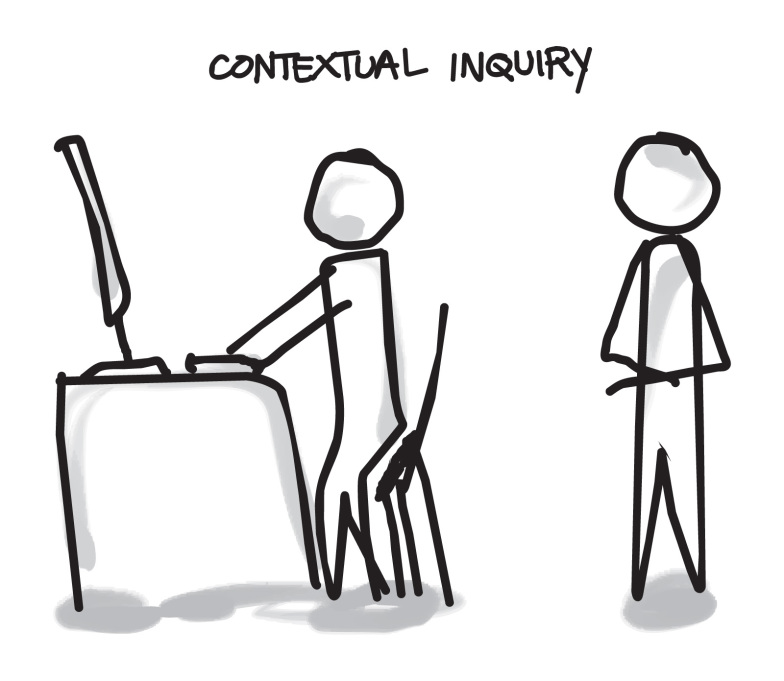This is a slightly different approach to user testing sessions. It involves you going to the user's location and watching them work.
In the user’s environment
What’s different here is that the users might already be very familiar with the product or, in our case, a specific website. So questions like “How can you find the list of customers?” don’t make a lot of sense if all users are performing that particular action regularly.
Your approach here should be slightly different. First, the introduction will be pretty much the same. You should still point out to the user that you’re not testing them but the website. They should know (and really believe) that you’re not evaluating their work. However, regarding the “tasks” part, you won’t be telling them what to do, but rather agree with them that you will assume the role of apprentice. Both of you should pretend that you’re new to the job and they need to teach you how to do it on the website. Then pay close attention to exactly how this person explains the website to you because that’s how this person understands it, even if it’s not really how the design team imagined it.
Listen carefully to what they say and compare this to what they’re doing. The “no assumption” rule holds here as well: don’t assume the meaning of even a vague sentence. If you’re not sure, ask.

Ideally, if there’s a chance to interview the website’s design/development team prior to the site visit, you definitely should do that. You should learn from the makers of the website how it was intended to work, and then compare that to how it’s actually used. The development team can also help you define the focus of your testing so you don’t get side-tracked.
Always take notes, and if possible, record the voice (at least), as video-ing the procedure will most likely be impossible. Observe everything that happens to the user, not just their interaction with the website itself. Do they have to answer a phone call every two minutes? Are they constantly distracted? Are they close enough to the screen to be able to read all the text? How large is their monitor?
After each session is done, take 10 to 15 minutes to summarize your notes. Do it right after the session because you’ll probably not remember everything that well a few hours later. Was there anything that stood out in this session, anything that made it different from others? Also, point out the things that were the same during this session as everywhere else, because those will be the aspects that are probably encountered by everyone.
Missed the previous part?
As always, you can catch-up and see our previous article in the series – Usability: Data collection